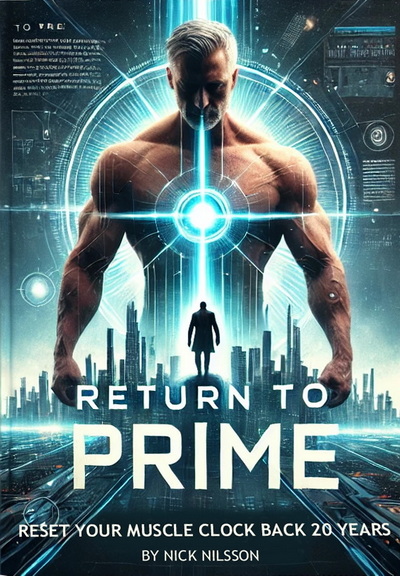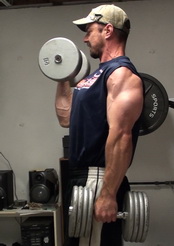To build a monster bench press, you need to not only develop power out of the bottom, you need to FINISH the movement all the way to the top.
That's where a technique pioneered by Dr. Squat, Fred Hatfield, called Compensatory Acceleration Training (CAT) really shines. Essentially, you continue to accelerate the weight PAST the point where the leverage becomes more favorable (e.g. the top half of the bench press) and all the way through to the top of the rep.
This acceleration compensates for the improved leverage of the press as you come to the top.
And that's where exercises like banded presses can help a lot... you accelerate against the stretching of the bands.
Now I've found something BETTER.
Not only do you get the benefits of working against the bands as you come to the top, you also get DIRECTIONAL resistance on the pecs (meaning the bands are pulling outwards so you have to exert inwards tension), AND you get additional loading from weights suspended by the bands.
As well, if you have bad shoulders (like me), because you're using a lighter weight for the bottom half of the movement, it's much easier on the shoulders while still developing power and strength at the top.
All of these things is why I like to call it the "perfect storm" for a killer bench press builder.
How To Set Up Band Kettlebell-Hanging Barbell Bench Press
While this setup may LOOK complex, it's actually not bad once you get an idea of how to do it.
You'll need a power rack for this one (or a bench press station with safety rails), two medium thickness bands, and two equal weight kettlebells.
I'm using green medium bands and a pair of 53 lb kettlebells here.
Set up the rack as a bench press station, with the safety rails just slightly below chest level when you're pressing (a little above is fine for this one, too). I do all my pressing in the rack for safety because I train alone at home.
Start with the bar in the J hooks, not on the rails, to make getting into position easier.
Hitch the bands to the safety rails, just a little lower down the rail than the bar will sit at the bottom of the press. Use a simple bale hitch, pulling one end of the band through the loop of the other end. Make sure you do this the same way on both rails to keep things even.

Now pull the end of the band through the kettlebell handle and let it sit there. Repeat on the other side.

Now unrack the bar.

Lower it down and set it on the rails.

Reach down and grab the ends of the bands on both sides.

Raise your hands up to grab the bar. This will raise the kettlebells off the ground. The band end should run across your palms.

Grab the bar with your normal bench press grip.

Now you're ready to press.
Develop tension in the chest and shoulders then EXPLODE out of the bottom of the press as powerfully as you can then KEEP pushing against the bar as HARD as you can (like Compensatory Acceleration Training).
The added resistance of the stretching bands and the kettlebells will really kick in about halfway up, right where you need it.

Keep pushing as hard as you can, TRYING to push the weight up as fast as you can until you lock out at the top.

Hold for a second or two then lower the bar under control back down to the bottom.

At the bottom, you can approach this one of two ways...
1. Don't set the bar fully on the rails. Pause at the bottom, like a paused bench press. Then repeat the explosive press.
2. Set the bar fully on the rails between reps like a dead stop bench press off the rails.
Either way will work great for building power out of the bottom.
I recommend doing this one for 3-5 sets of 3 to 5 reps. It's not worth going over 5 reps as that will diminish your power output...and this exercise is all about power.
I'm really excited about the potential for this exercise for developing a more powerful bench press. It felt GREAT... just a few sets turned my chest and triceps to jelly without any shoulder pain. I'm going to be working it regularly!
If you want to blow up your biceps, try Band Kettlebell Hanging Curls to get full-range tension.
---
Are you 40...50...60 or even 70+ years old and want to build muscle and strength like you did 20 years ago?
If you feel like you're fighting a losing battle, here's the secret to REVERSING muscle aging...
You need to train the body systems that SUPPORT your muscle mass, not just the muscle itself.
These underlying support systems diminish as you age but with strategic training, they can regenerate.
Share This Page...
Want More Exercises Like This?
You'll find them here...



